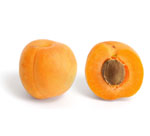Two CPR Strategies Fail to Improve Outcomes after Cardiac Arrest
Posted by: admin on: September 16, 2011
Two CPR strategies intended to improve patient survival after out-of-hospital cardiac arrest were found to have no significant effect in two related randomized clinical trials published in the Sept. 1 issue of the New England Journal of Medicine
-Team@CMHF
- In the first study by the Resuscitation Outcomes Consortium (ROC), a “priming the pump” approach entailing a 3-minute period of chest compressions before the first analysis of cardiac rhythm and defibrillation produced the same rate of survival as did a briefer (30- to 60-second) period of manual chest compressions before cardiac rhythm analysis.
- Thus, extending CPR before defibrillation in the hope of increasing myocardial perfusion failed to improve patient outcomes.
- In the second study, also by the ROC researchers, use of an impedance threshold device (ITD) to enhance venous return and cardiac output during CPR also produced the same rate of survival with satisfactory functional status, as did standard CPR without an ITD.
- Thus, use of the device also failed to improve patient outcomes.
- The first ROC study was undertaken because despite several small studies of the issue, it was still unclear whether the traditional CPR approach of delivering defibrillatory shocks as soon as possible was inferior to the newer recommendation that EMS personnel should administer at least 2 minutes of CPR before delivering the shocks.
- In theory, a few minutes of chest compression may increase myocardial perfusion, thus improving the metabolic state of the cardiac myocytes and enhancing the likelihood of successful defibrillation, said Dr. Ian G.
- They compared the two strategies by randomly assigning 9,933 adults treated by 150 EMS agencies in the United States and Canada to undergo either early (5,290 subjects) or delayed (4,643 subjects) defibrillation after non-traumatic cardiac arrest. The primary outcome measure was survival to hospital discharge with satisfactory functional status.
- An identical 5.9% of subjects in each of the study groups survived to discharge with satisfactory status. There also were no differences between the two groups in several subgroup analyses, including survival to hospital admission, survival to hospital discharge regardless of functional status, and return of spontaneous circulation by arrival at the emergency department.
- The second study was performed because no large randomized trial had yet addressed whether use of an ITD improved outcomes when compared with standard CPR
- The device is designed to increase the degree of negative intra-thoracic pressure during CPR by preventing the passive inflow of air into the chest during chest recoil between compressions, without impeding active ventilation.
- Animal studies showed that use of an ITD improved hemodynamics, perfusion of vital organs, and neurologically intact survival, and small, short-term clinical studies suggested that it increased systolic blood pressure during CPR and improved short-term survival.
- They randomly assigned 8,718 adults with nontraumatic out-of-hospital cardiac arrest to undergo CPR with an ITD (4,373 subjects) or CPR with a sham ITD (4,345 subjects).
- As with the first ROC study, the primary outcome measure of this study was survival to hospital discharge with satisfactory functional status.
- The rates of this outcome were 5.8% with the active ITD and 6.0% with the sham ITD, a nonsignificant difference
- There also were no significant differences between the two study groups in secondary outcomes such as the return of spontaneous circulation by arrival at the emergency department, survival to hospital admission, or survival to hospital discharge regardless of functional status, they added.
For further reading log on to
http://www.internalmedicinenews.com/news/cardiovascular-disease/single-article/two-cpr-strategies-fail-to-improve-outcomes-after-cardiac-arrest/9218585555.html
Search
- drchasrani: Difficult to get such a data, authenticated at that. Try Times of India online library
- rakesh pore: hi, where can i get genuine information about "10 most common drugs sold in india?" i want it for a local project
- nilesh dutta: sir, Plz give detail about MBA Sports Management Thanks and Regards


Leave a Reply